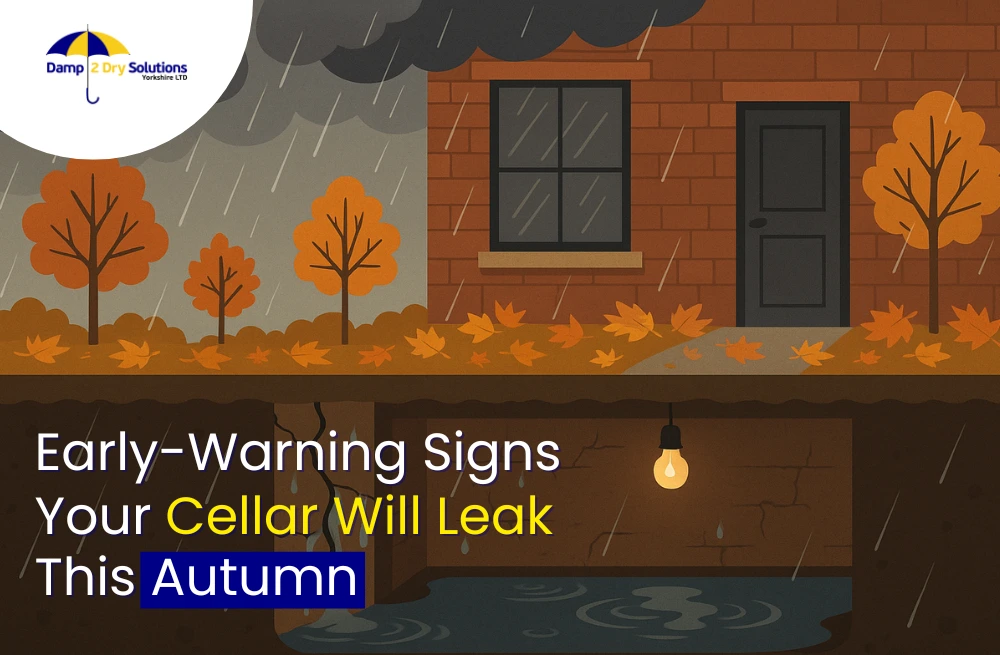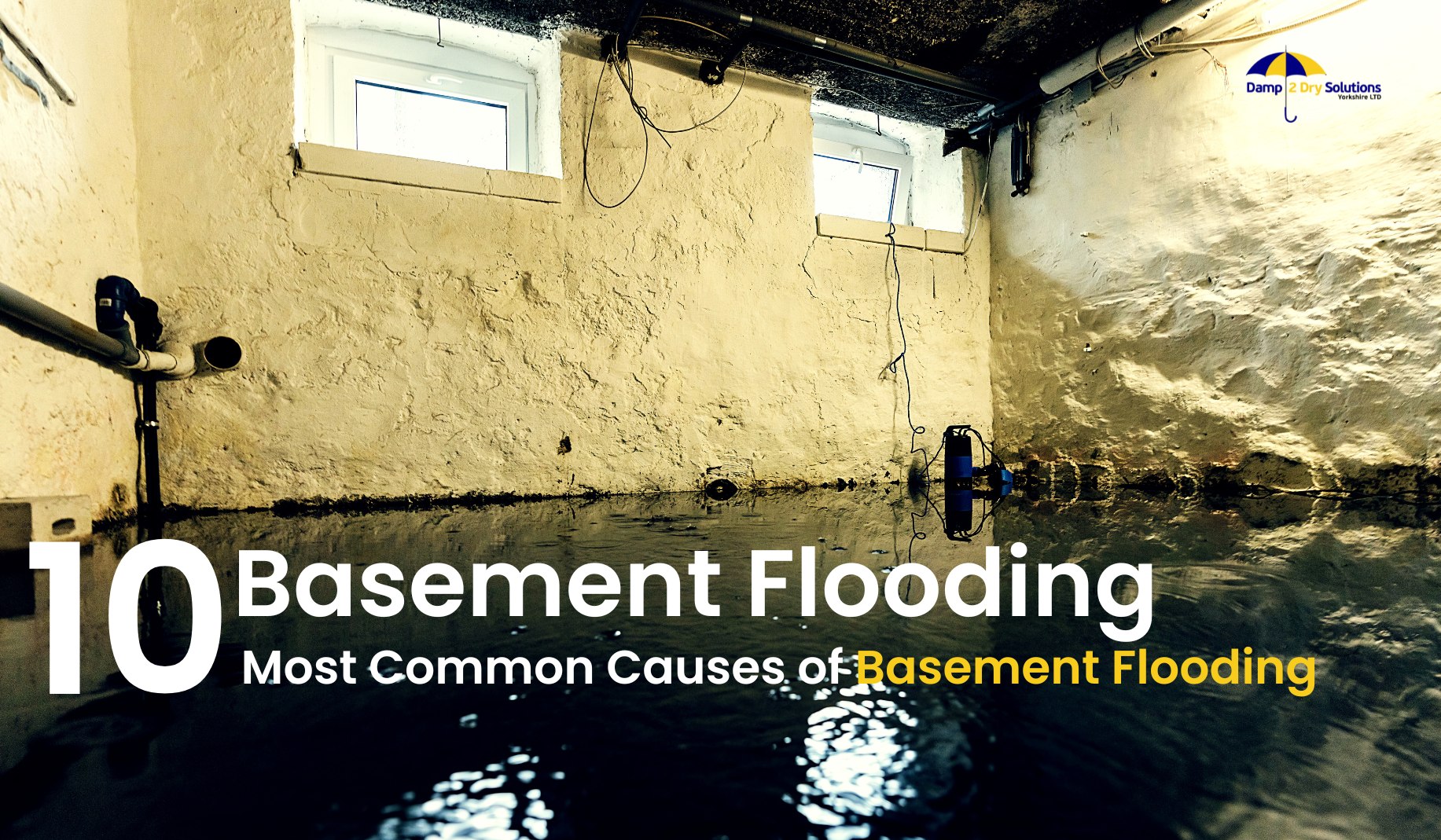Hydrostatic pressure is a common issue faced by many homeowners, particularly those with basements. Hydrostatic pressure is the force exerted by standing water in the soil surrounding your basement, potentially causing leaks and water damage.
This pressure is caused by the weight of groundwater pressing against the walls and floor of your basement, which can lead to a range of problems from minor leaks to major structural damage.
Understanding what causes hydrostatic pressure, the main factors that contribute to it, and the signs to look out for can help you take the necessary steps to mitigate its effects and protect your home.
In this blog, we’ll explore these aspects in detail and provide effective methods to reduce hydrostatic pressure around your basement.
What Causes Hydrostatic Pressure?
Hydrostatic pressure is the force exerted by a fluid due to gravity. In the context of basements, this pressure comes from groundwater accumulating around your home’s foundation.
When the soil surrounding your basement becomes saturated with water, the excess moisture creates a significant amount of pressure against the walls and floor.
This pressure can increase during heavy rainfall, rapid snowmelt, or poor drainage conditions, pushing water through any cracks or weak points in your basement walls.
Main Factors That Contribute to Hydrostatic Pressure
Hydrostatic pressure around your basement is influenced by several factors: heavy rainfall (30%) significantly increases soil saturation; poor drainage systems (25%) lead to higher water accumulation near the foundation; high groundwater levels (20%) exert constant pressure on basement walls; improper grading (15%) directs water towards the foundation; and certain soil types and compaction levels (10%) retain more water, thus increasing the pressure.
Understanding these factors can help you identify potential issues and take preventative measures.
1. Poor Drainage Systems
Ineffective or inadequate drainage systems are one of the primary contributors to hydrostatic pressure. When water is not properly directed away from your home, it can accumulate around the foundation, increasing the pressure on your basement walls.
2. High Water Table
The water table is the level at which the soil and rock are saturated with water. In areas with a high water table, groundwater is closer to the surface, increasing the likelihood of hydrostatic pressure on your basement.
3. Heavy Rainfall and Snowmelt
Extended periods of heavy rainfall or rapid snowmelt can saturate the soil around your home, leading to an increase in hydrostatic pressure.
4. Soil Composition
Certain types of soil, such as clay, retain water more effectively than others. This can lead to higher levels of groundwater accumulation and increased hydrostatic pressure.
5. Improper Grading
The slope of the land around your home plays a significant role in water drainage. If the ground slopes towards your home rather than away from it, water will collect around the foundation, contributing to hydrostatic pressure.
Signs of Hydrostatic Pressure
Recognising the signs of hydrostatic pressure early can help you address the issue before it leads to severe damage. Here are some common indicators to watch for:
Look for Cracking and Bowing Walls
One of the most noticeable signs of hydrostatic pressure is the appearance of cracks in your basement walls. Horizontal cracks are particularly concerning as they indicate that the walls are bowing inward due to the pressure exerted by the groundwater. Over time, these cracks can widen, compromising the structural integrity of your basement.
Check for Water in Your Basement
If you notice water seeping into your basement, it is a clear sign that hydrostatic pressure is forcing groundwater through cracks or weak points in the walls or floor. This can lead to dampness, mould growth, and water damage to your belongings.
Wall Collapse Signs
In extreme cases, the constant pressure from groundwater can cause basement walls to collapse entirely. This is a severe structural issue that requires immediate attention to prevent further damage to your home.
Worth Reading: 10 Most Common Causes of Basement Flooding
Top and Effective Methods to Reduce Hydrostatic Pressure
Now that we understand what causes hydrostatic pressure and the signs to look for, let’s explore some effective methods to reduce it and protect your basement.
1. Improve Drainage Systems
Installing or upgrading your home’s drainage system is crucial in preventing hydrostatic pressure. French drains, which are trenches filled with gravel and a perforated pipe, can help direct water away from your foundation. Additionally, ensuring that your gutters and downspouts are clear and functional will help divert rainwater away from your home.
2. Install a Sump Pump
A sump pump is an effective way to manage groundwater that accumulates around your basement. The pump is installed in a sump pit and automatically removes water when it reaches a certain level, directing it away from your home.
3. Waterproofing Your Basement
Applying a waterproof coating to your basement walls and floor can help prevent water from seeping through. Interior and exterior waterproofing methods can be used to create a barrier against moisture.
4. Proper Grading
Ensuring that the land around your home slopes away from the foundation is essential in preventing water accumulation. This can be achieved by adding soil to areas where the slope is insufficient and maintaining a positive grade away from your home.
5. Install Exterior Drainage Systems
In addition to improving interior drainage, installing exterior drainage systems such as curtain drains can help manage groundwater before it reaches your foundation. Curtain drains are installed around the perimeter of your home and work to redirect water away from the basement.
Also read: Understanding Basement Floor Drains: The Complete Manual
5. Soil Improvement
If your home is built on clay soil or other types that retain water, consider improving the soil composition around your foundation. Adding sand or gravel can help improve drainage and reduce the amount of water that accumulates near your basement.
6. Regular Maintenance
Regularly inspecting your basement for cracks, leaks, and other signs of hydrostatic pressure can help you address issues early. Sealing cracks and addressing any drainage problems promptly will help maintain the integrity of your basement.
Basement Waterproofing to Relieve the Effects of Hydrostatic Pressure
Waterproofing your basement is an essential step in relieving the effects of hydrostatic pressure. By creating a moisture barrier, you can prevent water from penetrating your basement walls and floor.
This not only protects the structural integrity of your home but also helps maintain a dry and healthy living environment. Investing in professional waterproofing solutions can significantly reduce the risk of water damage and mould growth, ensuring that your basement remains safe and functional.
Conclusion
Hydrostatic pressure can pose a significant threat to the structural integrity of your basement and the overall health of your home.
By understanding what causes this pressure, recognising the signs, and implementing effective methods to reduce it, you can protect your basement from water damage and structural issues.
Regular maintenance, proper drainage systems, and waterproofing measures are key components in managing hydrostatic pressure and ensuring the longevity of your home.
Taking these steps will not only safeguard your property but also provide you with peace of mind knowing that your basement is protected from the potentially devastating effects of hydrostatic pressure.
Damp2Dry Solutions (Yorkshire) Ltd. is here to safeguard your property against water intrusion. Specialising in state-of-the-art basement waterproofing and water damage restoration services, we’re dedicated to providing peace of mind for homeowners throughout Yorkshire.
Contact us today to discover how we can tailor our solutions to meet your specific needs.





